So what do we mean as audiophiles when we talk about systems that make a statement? I don’t know about you, but to me a statement system is one that represents the best of the best for the manufacturer at this particular point in time. It also, in most cases, represents the company’s design philosophy, or what they are looking for in premium sound. Let’s face it, the world would be a dull place if we all liked the same thing. There’s nothing dull about the three statement systems in this post that are all true to their heritage and represent a step forward and/or a significant product debut.
High Fidelity Services’ Verity Audio Room
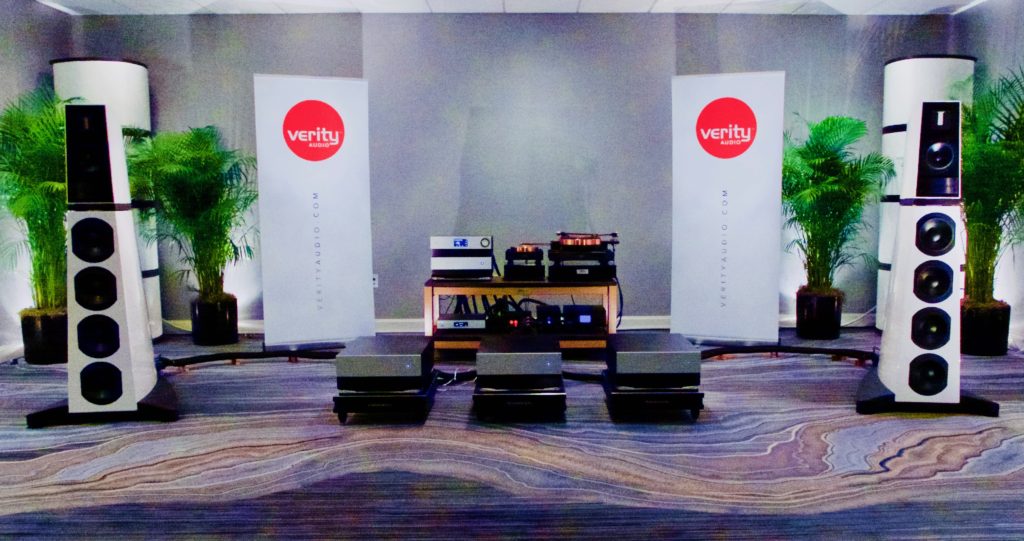
High Fidelity Services‘ Verity Audio room was huge. The speakers were huge, and the subwoofers were beyond huge, but the system moved me deeply. It was emotionally involving and could play a huge symphonic piece or a single acoustic guitar with the same beauty, tone and emotions. The system featured the debut of the Verity Audio Monsalvat speaker system, which includes a Pro-6 six-channel crossover for $675,000. You can see the four subs towering in each corner behind the speakers for a total of eight 18-inch drivers. This means each woofer only has to work a little. The system was driven by three of Verity Audio’s Monsalvat Amp-60 stereo amplifiers that go for $58,000 each.
The vinyl source was a TW-Acustic Raven phono preamplifier at $18,000, a TW-Acustic Raven Black Knight turntable for $42,000 with the debuting Raven 12-inch and 10.5-inch tonearms at $11,500 for the two. They were also debuting the Ortofon MC Century cartridge that goes for $12,000. The digital source was the Melco N1ZH MK1 music server for $4,995.
Hooking everything up, supporting everything and cleaning the power were Signal Projects cables, Vibex power distribution, a CAD GC-1 ground control unit, a Symposium Pro amp stand, Vibex isolation feet and an SRA rack.
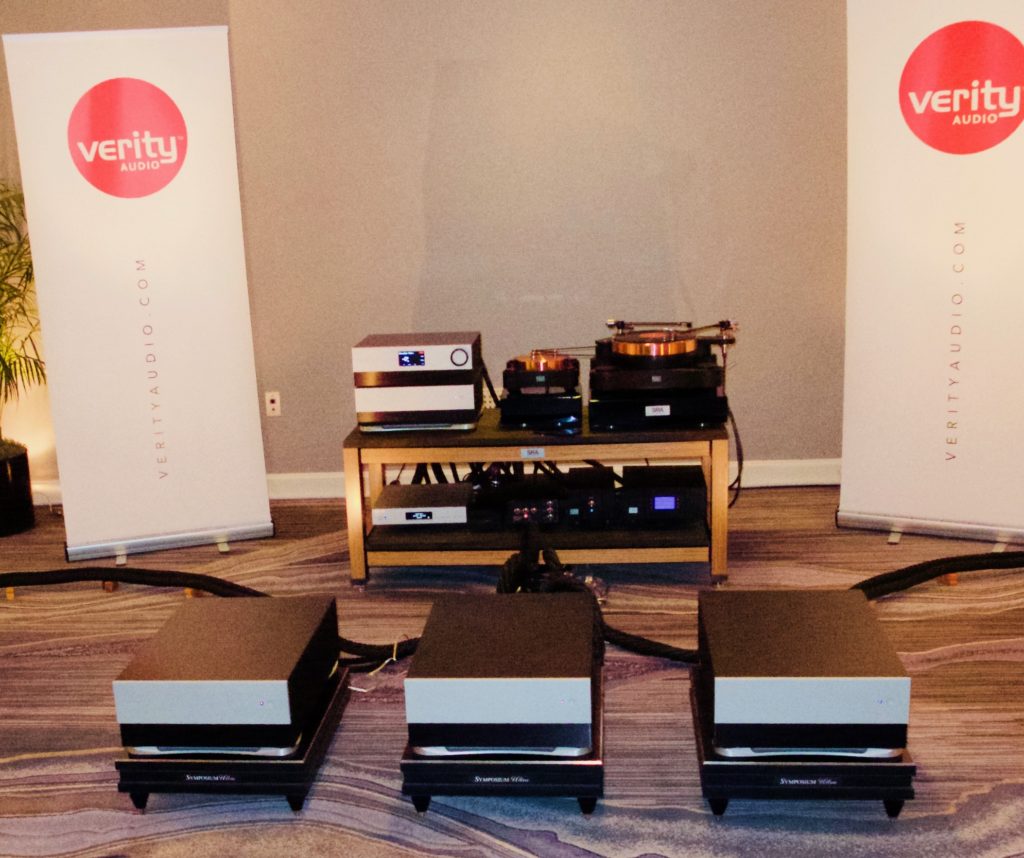
The total price comes to $1,115,400. Now before you have a “hissy fit” as they we would say in the South about the price, this system won’t even fit in most homes. It was built to show what is possible and with the hope that a few really wealthy people with room for them might purchase a pair of the speakers or the system. The value to the rest of us is what the manufacturers learn from building a system like this that works its way down to more affordable products.
This is a very special system that could play symphonic music, rock music, jazz, big band, bluegrass, or R&B they sounded like they were real people and real instruments in the room occupying an appropriate space for the performance.
DeVore Fidelity’s Orangutan Reference Speaker System
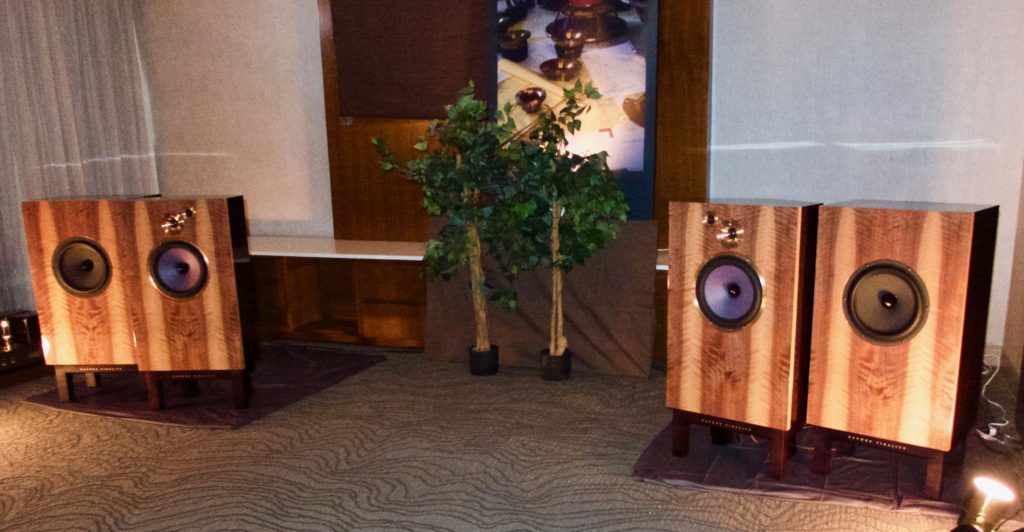
DeVore Fidelity’s Reference Orangutan Speaker System is a very different kind of statement system The speakers are still pre-production with a projected price between $80,000 and $90,000. When I say they are a different kind of statement system, I mean that the speakers are very easy to drive and do not require multiple amps or high-powered amps. So, while they cost nearly a hundred grand, you could drive them with several amps that are under ten grand and a turntable under $20,000, which means that you could easily have a statement system for under $200,000.
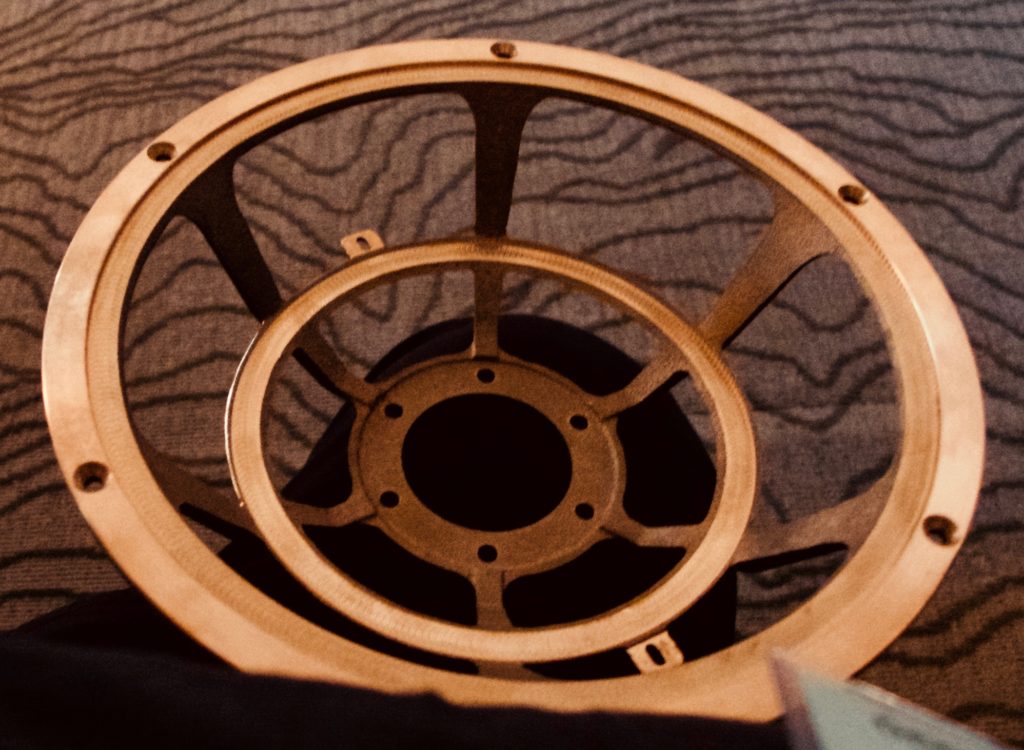 The reference apes use four cabinets instead of two. At first glance, they look like four of the Orangutan O/96 speakers that I reviewed several years ago and loved. But in no way are they simply an improved O/96 with a sub. Neither box is available separately. Yes the speaker on the inside has a 10-inch paper-cone woofer like the O/96, but it sits in a cast bronze basket.
The reference apes use four cabinets instead of two. At first glance, they look like four of the Orangutan O/96 speakers that I reviewed several years ago and loved. But in no way are they simply an improved O/96 with a sub. Neither box is available separately. Yes the speaker on the inside has a 10-inch paper-cone woofer like the O/96, but it sits in a cast bronze basket.
The motor is a huge Alnico magnet with copper Faraday rings above and below the cap, a titanium former and a machined bronze phase plug. Designer John DeVore says this results “in a far better magnetic and inductive linearity, increased sensitivity and an order of magnitude lower distortion throughout most of the frequency range.”
The main speaker also has a 1-inch silk dome tweeter that is loaded into a cast and machined slightly to flare the bronze horn. The new tweeter’s motor utilizes a rare-earth magnet and an underhung voice-coil for increased linearity at lower frequencies and to help obtain higher sensitivity. Then there is the 3/4-inch silk dome super-tweeter, also in a cast and machined bronze horn and using a rare-earth magnet that sits slightly above and to the inside of the tweeter.
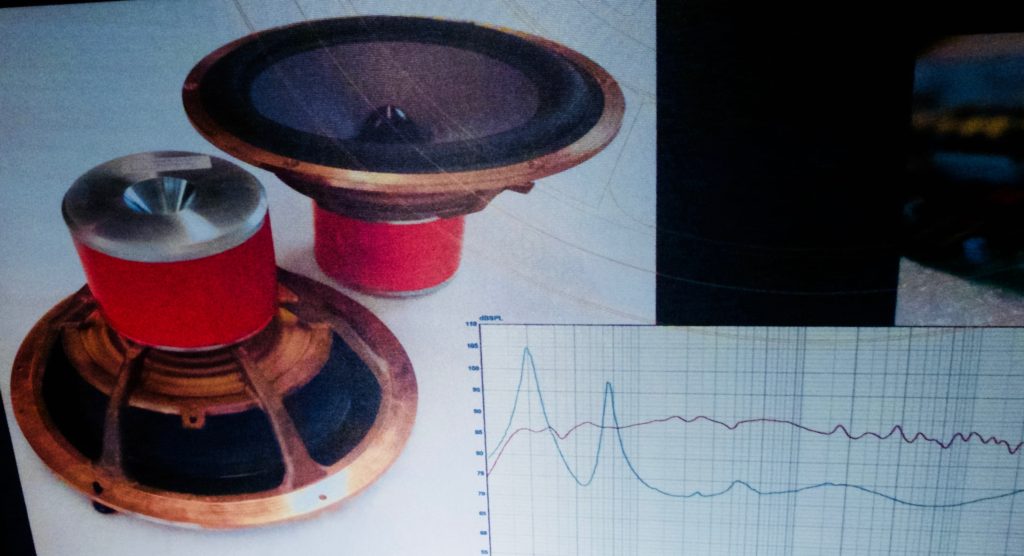
The main speaker also has a 1-inch silk dome tweeter that is loaded into a cast and machined slightly to create a flared bronze horn. The new tweeter’s motor utilizes a rare-earth magnet and an underhung voice-coil for increased linearity at lower frequencies and to help obtain higher sensitivity. Then there is the 3/4-inch silk dome super-tweeter, also in a cast and machined bronze horn and using a rare-earth magnet that sits slightly above and to the inside of the tweeter.
The bass speaker also uses a 10-inch paper woofer, but it gets extra coating to make it stronger. This driver has a new motor system with an oversized voice coil and has copper Faraday rings. Even the phase plugs on the bass drivers in each cabinet are bronze and then painted black. This woofer is reflex-loaded to below 20Hz in-cabinet with no equalization used. The driver is driven by a custom-made 300-watt class A/B amplifier with a linear power supply. The amplification uses an all-analog signal path but does offer the user an adjustable equalization at 20Hz and 35Hz for equalization for the room. The back of the speakers have dual ports that are also cast bronze and decoupled from the cabinet. The bass cabinet has heat sinks that run down the middle of the rear panel.
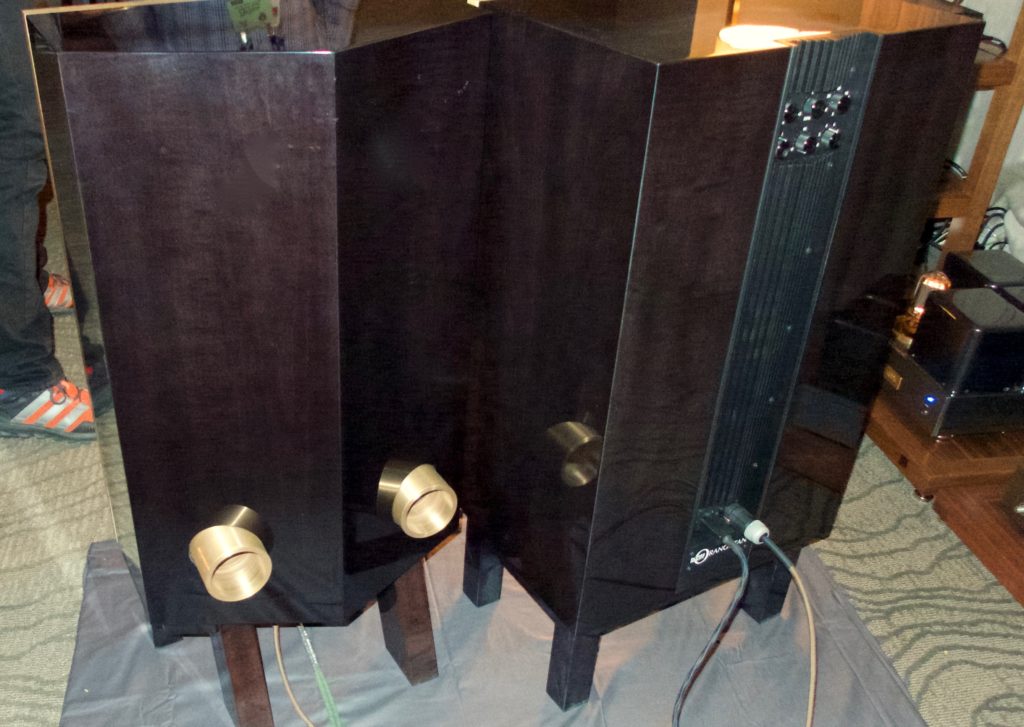
The rest of the system consisted of a pair of Air Tight ATM-211 monoblock amplifiers and a DAC from TotalDAC. The sound of this system was very dynamic and powerful. It had big tone and sounded very organic. I have to admit that I loved the DeVore Orangutan O/96 and O/93 speakers when I reviewed them, but these speakers are a whole new ball game. They are more extended, more refined, and extremely emotionally involving.
While the DeVore Orangutan Reference speakers take up a good bit off space, they take up a whole lot less space than any of the other statement systems I know of, but don’t think for a minute that the DeVore Fidelity’s Orangutan Reference Speaker System isn’t in that league. I promise you they compete with any speaker system. One other thing to consider is that because of how easy these speakers are to drive, they can give you a statement system for much less money than most.
Aaudio Imports with Wilson Benesch
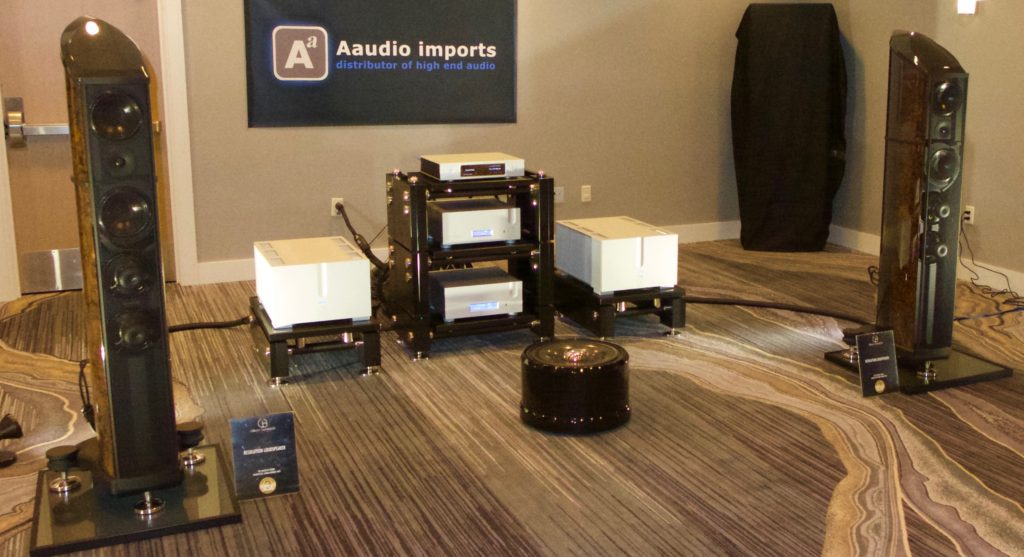
The Aaudio Imports room was on my list to get back to for one more listen on Sunday. This system was simply superb. It consisted of the Wilson Benesch Resolution speakers at $69,500/pair. Brian Ackerman said they need 500 hours to break-in and loosen up, and when I first heard them on Friday, they had less than 100 hours on them. By Sunday afternoon they sounded so much better that I just wanted to sit and listen
The rest of the system was the Wilson Benesch Torus + Amp $12,900 to finish out the bottom end. The electronics were from Ypsilon with the PST 100 MKII tube preamp at $37,000, the Hyperion Mono amps at $93,000 for the pair, and their DAC 1000 at $24,500. They were using an Aurender N10 music server at $8,000 to complete the source. All of that was sitting on a Wilson Benesch R1 Carbon Modular Hi-Fi rack for $25,500 as shown and their Carbon Plinth Medium for $3200. The power distributor was the incredible HB Cable Design PowerSlave Marble MKII for $16,500. The system was connected and plugged in with over $55,000 of Stage III cabling.
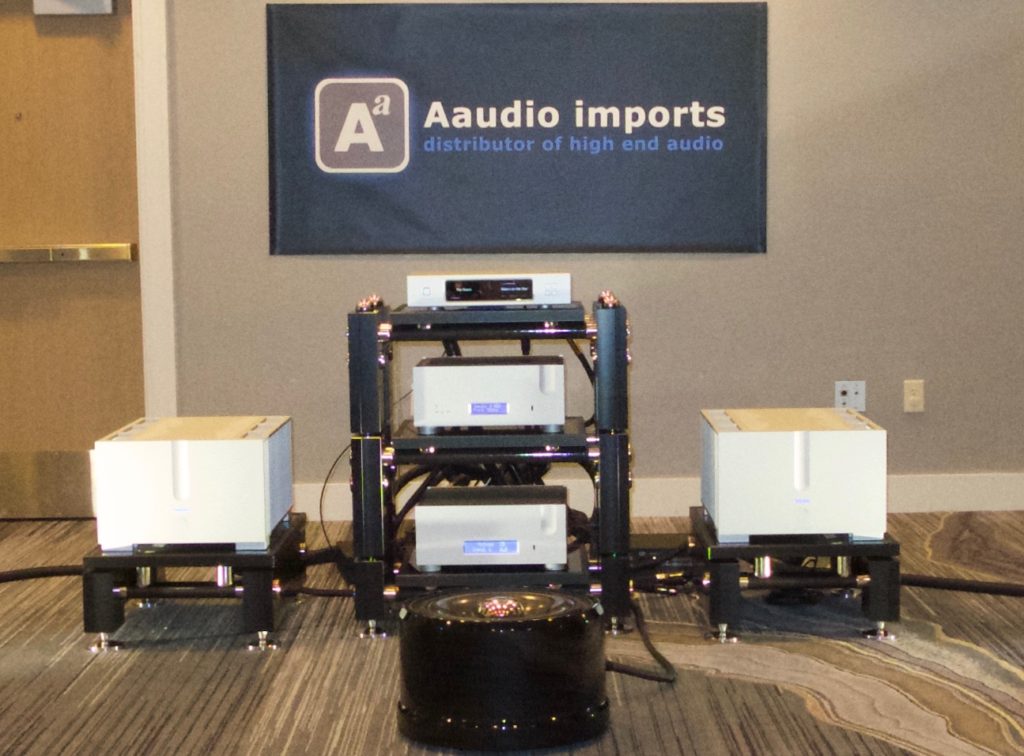
Yes, this is another unbelievably expensive system, but I promise you it was really worth hearing this system, especially on Sunday afternoon when the speakers were beginning to break in. I would love to hear them after another 200 hours or so of playing time.

Hi Jack,
I have followed you reviews for years and on ocassion have purchased gear on your recommendations. Most of the time your recommendations are GREEEEeeeeeeeaT! Heres a simple question a loooooooong time ago you recommended some two ways. BTW it was agreat review piece. You have moved on and it “seems” you are smitten by big buck systems……maybe it is just my take? So are there any speakers that ARE REALLLLLLLY good that are under $8,000? Also I noticed that no where in your reviews have you ever mentioned maggies or nolas. Is there areason for that OR is it just that there is only so much time to devote to speakers? BTW next time I am in the Bay Area working I would love to take you to lunch!
Best always
Charlie
aka Carlitos
Charlie, thanks so much for the kind words, and I would love to meet up with you next time you are in the Bay Area. By the way, 12 of my last speaker reviews have been of speakers under $8,000 If you want a floor-standing speaker, the DeVore Orangutan 0/93s cost $8,400, but they are just as good as I say in my review or as many others say. If you want a stand-mounted speaker, there are the Teresonic Magus for $8,000, the QLN Signature 3s for $7,000, the Legacy Audio Calibre for $5,500, or the Studio Electric m4 Monitors for $2,500.
As far as why I’ve never reviewed Maggies or NOLAs, I’ve never been a big fan of Maggies; they always sound fine, but never seem very emotionally involving. I would love to review a pair of NOLAs and will be requesting a pair soon. Of course, which if any of these speakers would be right for you totally depends on your amplification.
Thanks again for reading The Audio Beatnik. And call me next time you’re coming my way!
jack
Jacjk,
thank you so much for taking time to answer my query.
Wishing you and your loved ones much love and kindness